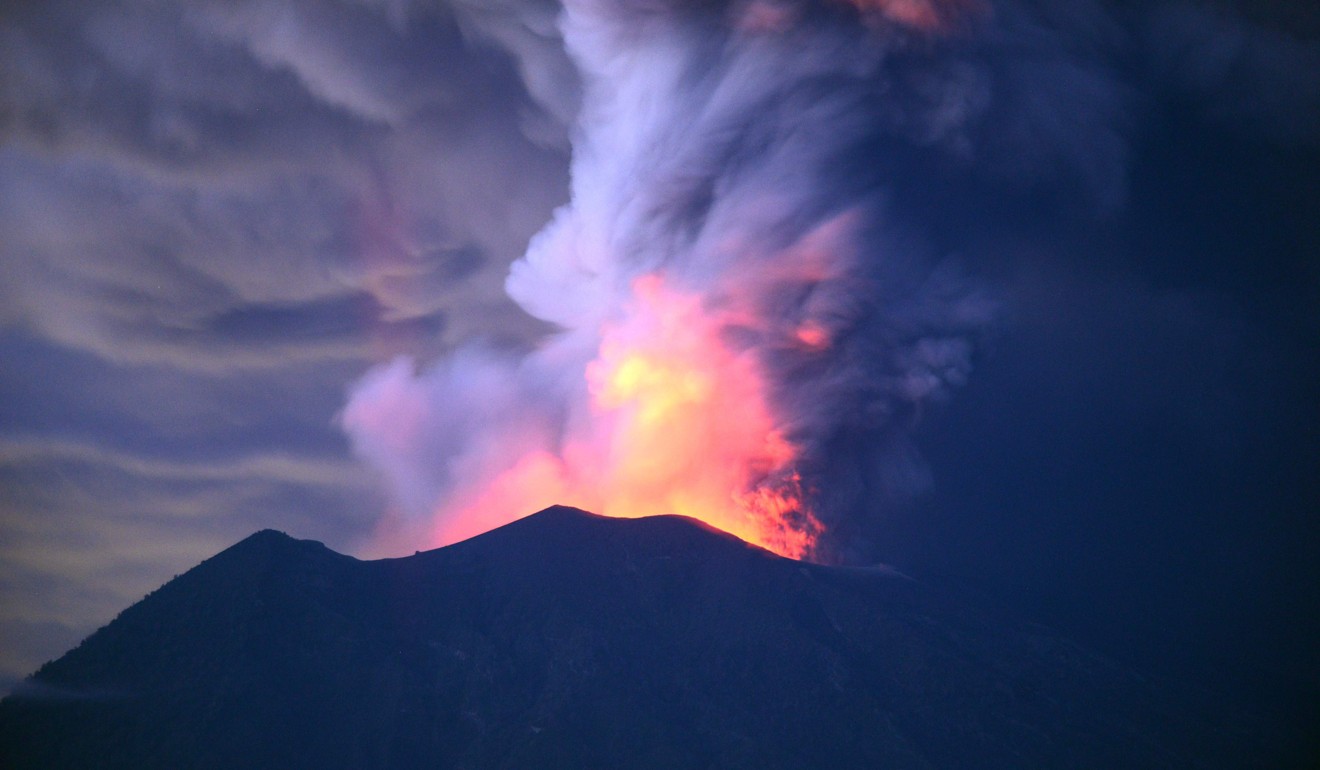
Almost 19,000 mainland Chinese and Hong Kong visitors stranded in Bali as ash from Mount Agung keeps flights grounded
Denpasar International Airport closed for second day running due to poor visibility after volcanic eruption, with 100,000 residents told to evacuate
Almost 19,000 mainland Chinese and Hong Kong visitors were among those stranded in Bali as the threat of an Indonesian volcano eruption caused another day of travel turmoil.
Stranded tourists searched for accommodation while frightened villagers living in the volcano’s shadow made their way to more than 200 evacuation centres.

Many flights were cancelled until Wednesday morning, stretching the grounding of flights at Bali’s Denpasar airport into a third day.
Ash clouds first emerged on Monday, entering flight paths and posing a significant danger to aircraft engines.
Bali is one of Asia’s top holiday destinations. Millions of foreign tourists visit each year.
Some tourists sought alternative transport to skirt the air travel disruption with a 13 hour coach-ferry-coach route off the island and to the nearest major airport in Surabaya, officials and airlines said.
China stated there were 17,000 Chinese tourists on Bali before the latest eruption of Mount Agung.
The Chinese consulate on the Indonesian island said it had arranged 100 buses to take its citizens to catch ferries to neighbouring Java.
Hong Kong’s airlines cancelled all flights until Thursday. Up to five daily flights depart from Hong Kong to the popular Indonesian destination.
Red alert as Bali volcano eruptions dust resorts in ash, disrupt flights
Airlines were trying to minimise disruption in the short term by waiving cancellation and rebooking fees and urging people to avoid non-essential travel. The companies were at the same time attempting to stave off losing millions of dollars following the disruption.
The probability of a large eruption is high, but this may take some days or weeks to unfold
As of Tuesday evening, the Hong Kong’s Security Bureau’s lowest travel advisory warning remained in place for Bali. It asked travellers to “monitor the situation” and “exercise caution”.
Mount Agung last erupted in 1963, killing about 1,600 people in one of the deadliest eruptions ever seen in a country with nearly 130 active volcanoes.
“What we are seeing at the moment are small explosions, throwing out hot gases and fragments of molten rock, or ash,” said David Pyle, a volcano expert at the University of Oxford in Britain.
“The probability of a large eruption is high, but this may take some days or weeks to unfold.”
Agung rumbled back to life in September, forcing the evacuation of 140,000 people living nearby. Its activity subsided in late October and many returned to their homes.
Indonesia is the world’s most active volcanic region. The archipelago of over 17,000 islands lies on the Pacific “Ring of Fire” where tectonic plates collide, causing frequent volcanic and seismic activities.
Additional reporting by Agence France-Presse


